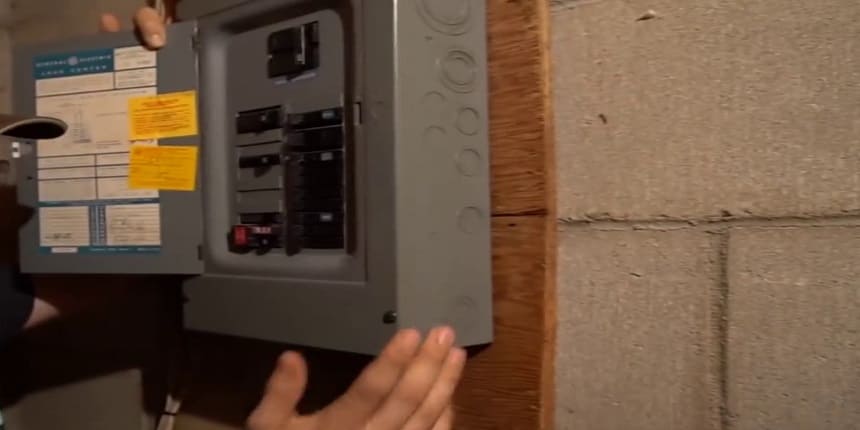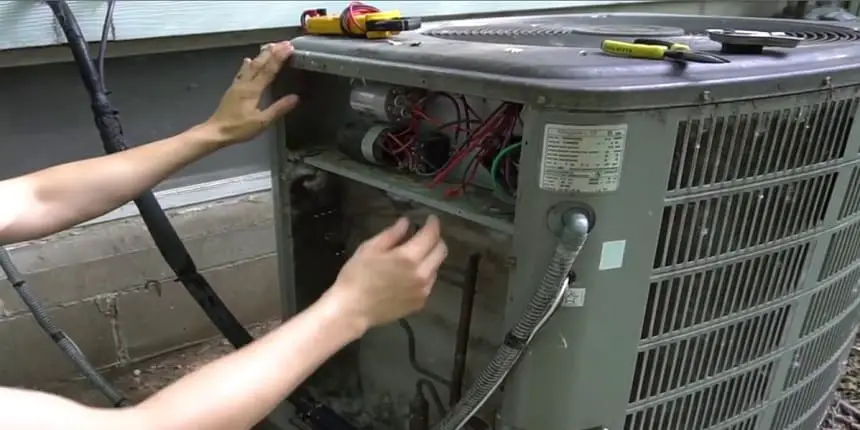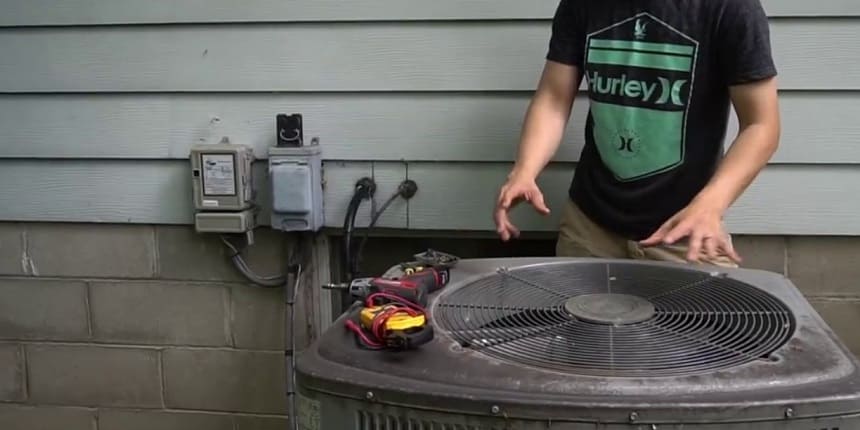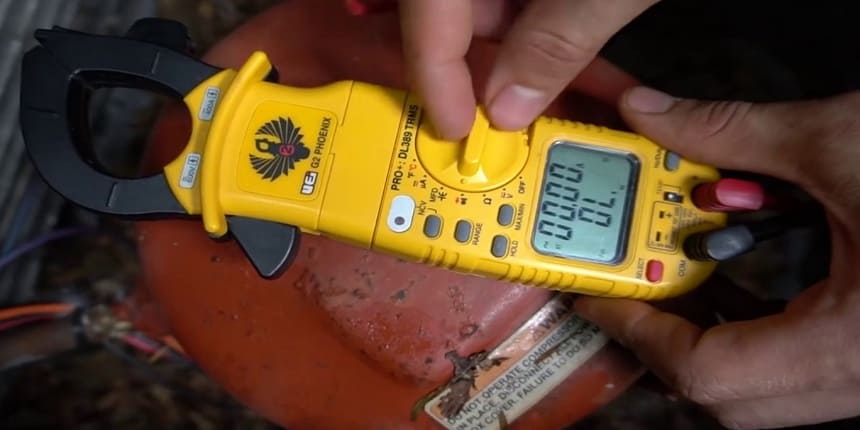A portable air conditioner may keep tripping the breaker due to overloading the circuit or a faulty electrical connection. This can result from using too many appliances on the same circuit or using an extension cord that can’t handle the load.
The air conditioner’s compressor may be faulty, causing it to draw excessive power and trip the breaker. To prevent this issue, make sure that the air conditioner is plugged into a dedicated circuit and not sharing power with other appliances.
Check the electrical connections and using the appropriate extension cord can also help resolve the problem.
Page Contents
- 1 Reasons Behind Why Does My Portable Air Conditioner Keep Tripping the Breaker
- 2 AC Trips Breaker Immediately Overloaded Circuit Issues
- 3 Voltage Fluctuations And Their Impact On Portable AC Trips Breaker After 5 Minutes
- 4 Evaluating Wiring Problems Behind New Portable AC Tripping Breaker
- 5 Troubleshooting Tips – How Do I Stop My AC From Tripping The Breaker
- 6 Additional Solutions Air Conditioner Circuit Breaker Outside – Resolving Breaker Tripping
- 7 What Do I Do If My Portable Air Conditioner Keeps Tripping The Breaker?
- 8 What Would Cause An Ac Breaker To Keep Tripping?
- 9 Can I Plug A Portable Air Conditioner Into A Regular Outlet?
- 10 Why Does My Portable Air Conditioner Keep Shutting Off?
Reasons Behind Why Does My Portable Air Conditioner Keep Tripping the Breaker
A portable air conditioner tripping the breaker can be frustrating, especially during hot summer days. There are a few common causes that can lead to this issue.
Overloaded Circuit

When the portable air conditioner is plugged into a circuit that is already carrying a heavy load, such as multiple appliances or other high-power devices, it can cause the breaker to trip.
Voltage Fluctuations
Fluctuations in the voltage supplied to the air conditioner can also lead to tripping of the breaker. This can happen due to issues with the electrical system or during times of high demand on the power grid.
Inadequate Wiring
If the electrical wiring in your home is not properly sized or installed, it can lead to overheating and the tripping of breakers. Inadequate wiring may not be able to handle the power requirements of the air conditioner.
AC Trips Breaker Immediately Overloaded Circuit Issues
One possible reason for the AC trip breaker’s immediate issue is an overloaded circuit. An overloaded circuit occurs when the total amperage used by the devices connected to the circuit exceeds the circuit’s capacity. If your portable air conditioner keeps tripping the breaker, it could be due to insufficient amperage.
Insufficient amperage happens when the circuit is not designed to handle the power requirements of your air conditioner. If your portable air conditioner shares the same circuit with high-power appliances like refrigerators or washers. These appliances draw a significant amount of power, and if combined with your air conditioner, can overload the circuit.
| Possible Solutions: |
|---|
| 1. Plug the portable air conditioner into a dedicated circuit. |
| 2. Unplug other high-power appliances from the same circuit. |
| 3. Reduce the load on the circuit by using energy-efficient appliances. |
Voltage Fluctuations And Their Impact On Portable AC Trips Breaker After 5 Minutes
Voltage fluctuations can be a common cause for a portable air conditioner tripping the breaker.
Power surges and drops in electrical supply can impact the functioning of the air conditioner.
When the voltage suddenly increases above the normal range, it can overload the circuit and cause the breaker to trip.
Similarly, if the voltage drops below the required level, the air conditioner may not receive enough power to function properly and can trip the breaker for that reason.
Inconsistent electrical supply can be caused by various factors such as faulty wiring, overloaded circuits, or issues with the power grid.
So, it is necessary to address these voltage fluctuations to ensure the efficient operation of your portable air conditioner and prevent unnecessary breaker tripping.
Evaluating Wiring Problems Behind New Portable AC Tripping Breaker
When a new portable AC tripping breaker frequently, one of the major potential causes could be wiring problems.

One common wiring problem is loose connections. Loose connections can disrupt the flow of electrical current, causing the breaker to trip frequently.
Another issue could be faulty wiring installations. If the wiring is not properly installed, it may not be able to handle the electrical load required by the air conditioner, leading to breaker trips.
Inadequate gauge size, meaning the wiring size is not appropriate for the electrical load, can also cause the breaker to trip. It is important to ensure that the correct gauge size is used during installation.
Troubleshooting Tips – How Do I Stop My AC From Tripping The Breaker
Portable air conditioners are a convenient way to cool down a room, but if your unit keeps tripping the breaker, it can be quite frustrating. There are several troubleshooting tips you can try to address this issue.
No 1: Inspect Power Cord: Start by checking the power cord of your portable air conditioner. Make sure it is securely plugged into a grounded outlet and not damaged in any way.
No 2: Check for Obstructions: Examine the unit for any obstructions that could be causing it to overheat. Ensure that the air intake and exhaust vents are clear of debris, furniture, or curtains.
No 3: Clean and Maintain Filters: Regularly clean and maintain the filters of your portable air conditioner. Dirty filters can restrict airflow, resulting in the unit drawing more power and potentially tripping the breaker.
No 4: Optimal Placement and Ventilation: Ensure that your air conditioner is placed in an area with proper ventilation. Avoid placing it near heat sources or in direct sunlight. Providing adequate airflow around the unit can help prevent overheating. For detail information check below,
Step 1: Inspecting Power Cord And Outlet

Inspecting the power cord and outlet is crucial to prevent your portable air conditioner from tripping the breaker.
Ensure that the power cord is not damaged or frayed. A damaged cord can cause a short circuit and result in frequent breaker trips. If you notice any signs of wear and tear, it’s important to replace the cord immediately.
Checking the outlet’s amp rating is equally important. Portable air conditioners typically require a higher amp rating than other appliances. Ensure that your outlet can handle the required amperage to prevent overloading and tripping. If your outlet has a lower amp rating, consider upgrading to a suitable outlet or consult an electrician for assistance.
Step 2: Removing Obstructions And Blockages
Portable air conditioners are a convenient way to cool your space, but if they keep tripping the breaker, it can be frustrating. One common cause of this issue is obstructions and blockages in the unit.
Debris, such as dust, dirt, or pet hair, can accumulate over time and obstruct the airflow pathways. To address this problem, it is important to regularly clean and maintain your portable air conditioner.
Removing debris can often be done by simply opening the unit and using a vacuum or soft brush to gently clean any visible buildup.
Additionally, it is essential to clear the airflow pathways to ensure proper circulation. This can be achieved by checking for any blockages, such as furniture or curtains, that may be obstructing the unit’s intake and exhaust vents.
Step 3: Cleaning And Maintaining Filters
Regular cleaning and maintenance of the filters in your portable air conditioner is crucial for its optimal performance and to avoid tripping the breaker.
Cleaning the filters should be a part of your regular cleaning schedule. Over time, dust, dirt, and debris can accumulate on the filters, obstructing the airflow and causing strain on the system. This can ultimately lead to the unit tripping the breaker. Cleaning the filters helps ensure effective cooling and proper functioning of the air conditioner.
Furthermore, if the filters are damaged or worn out, they may need to be replaced or repaired.
Damaged filters can reduce the efficiency of the air conditioner and increase the risk of it tripping the breaker. Regularly inspecting and replacing damaged filters is important to maintain the performance of your portable air conditioner and prevent electrical issues.
Step 4: Placing And Ventilating The Air Conditioner
Portable air conditioners are a convenient cooling solution, but if they keep tripping the breaker, it can be frustrating. The placement and ventilation of your air conditioner play a crucial role in preventing this issue.
Firstly, it’s important to avoid placing your air conditioner in overcrowded and confined spaces. Limited space can restrict proper airflow, causing the unit to overwork and trip the breaker. Ensure that there is ample space around the air conditioner for efficient operation.
Providing sufficient airflow is also key. Make sure there are no obstructions around the unit, such as furniture, curtains, or blocked vents. Clear any debris from the vents and filters regularly to maintain good airflow.
Additionally, consider using extension cords with the correct amperage rating to connect your air conditioner to the power source. Using inadequate or overloaded extension cords can lead to excessive electrical load and breaker trips.
By following these guidelines for placing and ventilating your portable air conditioner, you can prevent breaker trips and enjoy a cool, comfortable environment.
Additional Solutions Air Conditioner Circuit Breaker Outside – Resolving Breaker Tripping
Portable air conditioners can trip the breaker for several reasons, but there are additional solutions to consider when this problem occurs.
One solution is to use a dedicated circuit for the air conditioner. This means connecting the unit to its circuit breaker instead of sharing it with other appliances.
Another option is installing a voltage stabilizer, which can help regulate the power supply and prevent overload.
#1: Dedicated Circuit For Air Conditioner
A dedicated circuit means that the air conditioner is the only device connected to that particular circuit. This is important because portable air conditioners typically draw a significant amount of power.
Before installing a dedicated circuit for your air conditioner, it is advisable to hire an electrician. An electrician will have the expertise to assess your current electrical system and determine the appropriate circuit requirements.
Hiring an electrician is crucial as they have the knowledge and experience to calculate factors such as the voltage, amperage, and wire size necessary for the air conditioner. They will also be able to accommodate any other electrical devices you plan on using simultaneously with the air conditioner.
#2: Using Voltage Stabilizer For Stable Electrical Supply

Portable air conditioners are a convenient solution for cooling a specific area, but they can sometimes trip the breaker. One way to prevent this issue is by using a voltage stabilizer.
These devices help provide a stable electrical supply to your air conditioner, ensuring that it operates smoothly without overloading the circuit. The benefits of using a voltage stabilizer include:
Preventing breaker tripping: A voltage stabilizer regulates the voltage, preventing sudden spikes or drops that can trip the breaker.
Protecting the air conditioner: By maintaining a stable voltage, a stabilizer protects the internal components of your portable air conditioner from damage caused by fluctuating power supply.
Improving energy efficiency: Stabilizers optimize the voltage supply, reducing energy consumption and saving you money on your electricity bills.
Extending the lifespan of the air conditioner: Constant voltage fluctuations can shorten the lifespan of your air conditioner. With a stabilizer, you can ensure a consistent and safe power supply, prolonging the life of your unit.
When selecting a voltage stabilizer for your air conditioner, choose a model that is accurately suitable for the power requirements of your specific unit. Check the voltage and amperage requirements of your air conditioner and select a stabilizer that can handle the load.
#3: Professional Assistance For Troubleshooting
Portable air conditioners are a convenient way to cool specific areas, but it can be frustrating when they keep tripping the breaker.
When facing this issue, it’s essential to seek professional assistance for troubleshooting. Qualified electrician services are vital to diagnose and fix complex wiring issues that may be causing the breaker to trip repeatedly.
An experienced electrician can assess the electrical load of your air conditioner and ensure that it is compatible with your home’s circuitry. They can also check for any faulty wiring, loose connections, or overloaded circuits that could be causing the tripping.
By hiring a professional, you can trust that they have the expertise to identify and resolve the root cause of the problem. They can provide practical solutions to ensure the safe and efficient operation of your portable air conditioner without tripping the breaker.
| Benefits of Professional Electrician Services |
|---|
| Expertise: Qualified electricians have the knowledge and experience to handle complex wiring issues. |
| Safety: They can ensure that your portable air conditioner operates safely without posing any electrical hazards. |
| Efficiency: Hiring professionals saves time and money by quickly diagnosing and fixing the problem. |
| Long-term solutions: Electricians can provide lasting solutions to prevent future breaker tripping. |
What Do I Do If My Portable Air Conditioner Keeps Tripping The Breaker?
If your portable air conditioner keeps tripping the breaker, here’s what you can do: First, check if the unit is drawing too much power by unplugging other devices on the same circuit. Next, make sure the circuit breaker is the correct size for your AC unit.
What Would Cause An Ac Breaker To Keep Tripping?
The main reasons for an AC breaker to keep tripping could be electrical overload, short circuits, or a faulty breaker itself. It is important to address the issue promptly by reducing the load, checking for faulty wiring, or replacing the breaker if necessary.
Can I Plug A Portable Air Conditioner Into A Regular Outlet?
Yes, you can plug a portable air conditioner into a regular outlet. Make sure the outlet is grounded and can handle the unit’s power requirements.
Why Does My Portable Air Conditioner Keep Shutting Off?
Portable air conditioners can shut off for several reasons. It could be due to a clogged air filter or a dirty condenser coil, which can cause the unit to overheat. Another possibility is that the unit’s thermostat is malfunctioning. Regular maintenance and cleaning can help prevent these issues and keep your air conditioner running smoothly.
